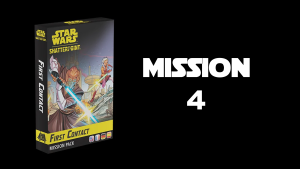I’ll be the first to admit that I’m not great at visually judging distances. Even if you are a person who can, it can still be tough to set yourself up to be in position for a future activation. As such, the goal of this article is to start figuring out some good measurement rules of thumb to remember in a game of Shatterpoint. I’m sure as time goes on we’ll add to the list, but today we’ll keep it fairly brief and simple so it’s easy to remember.
Just a general disclaimer: I show a lot of side by side photos in this article and, even though I try to line them best I can, a slight angle change between the two pictures may make it look like the starting position of a miniature changed. Deal with it!
To get started, we should look at the fundamental building blocks of the game: the range rulers and game components.
The Numbers
Measurements for all the important game pieces are summarized in the table below. Everything has been rounded to not go beyond two significant digits. I’ve include inches and millimeters. As a Canadian I unfortunately have to use both anyway in day to day life. I’ll probably use both units in the article so you can all share in my suffering.
| Component | Inches | Millimeters |
| Range 1 | 1 | 25 |
| Range 2 | 3 | 76 |
| Range 3 | 6 | 152 |
| Range 4 | 8 | 203 |
| Range 5 | 10 | 254 |
| Objective token | 1 | 25 |
| Small base | 1.6 | 40 |
| Large base | 2.0 | 50 |
| Dash tool | 3.3 | 85 |
| Advance tool | 5.9 | 150 |
The term “small base” refers to what most characters in the core set use. The term “Large base” refers to the base B1s, Grievous, etc. use. atomic Mass Games has a reference for what base size each character uses on their website. For the most part I’ll be looking at small base moves in this article, so for large base units just remember they go a bit faster.
Note as well that there is no dedicated range 1 tool in Shatterpoint. The short end of the range rulers are all range 1, as is the shove tool. I measured the movement tools from the inside-most point on the curved end to the middle of the flat end.
Using the table above you could map out everything I’m about to do and do it more precisely than I will convey. But I find pictures are easier to remember, so stick around!
Objectives & Shoves
A question that has often come up in my games is “how many shoves will I need to push that character off of the objective?” Conversely, “how close do I need to put my character so that it takes two shoves to take them off of the objective?” Let’s answer both of those right now.
Consider the below picture of Obi-Wan. In that position, a single shove directly away from the token will take him to exactly range 2 of the token. He’s pretty much range 1 away from the center of the token, or half an inch away from the edge of the token. if I’m trying to shove Obi off of the objective, I probably want 3/4 of an inch clearance from the token before I feel confident about a single shove getting him off, just to account for my own poor estimation and the possibility I don’t push him straight backwards.
The main thing to take away from this scenario is that half an inch (from the edge of the token) is approximately the break point for a single shove getting a small base character off the point.

I know I just said I would mainly look at small base moves in this article, but let’s make this the exception. Consider the below picture of a B1 next to an objective. Similar to the prior scenario, a single push will put this B1 at exactly range 2 of the token. It’s a bit hard to tell in the picture, but there is a liiiiittle bit of daylight between the base and the token. If I am the B1 player and want to make sure it takes two shoves to take me off the objective, I would plan to touch the token with my base.

Both scenarios show that two shoves will always (provided the right angle and terrain features) be enough to remove a character from contesting range.
Getting in to Melee
If you’re anything like me, first of all, I’m sorry. Second, you’ve probably noticed a lot of big melee scrums in Shatterpoint. Melee is pretty hard to avoid, and there’s a good reason for that. The longest ranged guns we have currently are range 5. As illustrated below, if the B1 shoots Luminara from exactly range 5, Luminara can advance towards the B1 and get into melee with room to spare. Of course, on a real table there may be terrain or other factors that make it so Luminara cannot advance directly towards the B1s.

We’ve looked at the advance, so now how about the dash? Here Luminara is exactly at range 4 of the B1s. A dash takes her just short of melee. Even range 5 doesn’t protect you from a retaliatory advance + chop, but range 4 is indeed enough to protect from dash + chop. Remember: jumps and climbs use the same move template. Therefore, to jump or climb then melee someone, you have to start a bit closer than range 4.

Moving to Objectives
Luckily for us, melee range and objective contesting range are both range 2. That means a lot of the stuff we just looked at with melee is still useful when we look at “can I get to range to contest that objective?” or not.
Since we just covered it, I’ll just reiterate the last conversation in terms of objectives. If you are within range 5 of an objective, you can comfortably advance into contesting range. To dash, climb, or jump within contesting range you will need to start a little closer than range 4.
The next few pictures show a 501st clone and how close he has to start to the objective to be able to move into contesting range.


Moving Between Objectives
Shatterpoint is a very dynamic game. It’s often not enough to simply be at an objective, rather you want to also be in a position to easily relocate to a different objective. If you don’t want to overload your memory circuits skip this section, you can derive a lot of it from the above part about moving to objectives. After all, moving between objectives is just moving to a new objective.
If you’re still with me, great! I’ll try to keep this brief and snappy as we examine a couple more cases. Let’s start with moving between what I call “adjacent objectives”, which is to say objectives that are next to each other horizontally or vertically but not diagonally. Adjacent objectives are placed range 5 apart measuring center to center.
Our boy Rex wants to advance from the right objective to the left objective. The furthest away he can start and still make it is about 1/2 inch on the far side of the right objective.

Of course, I’m much more interested in dashes between objectives. This is because out-of-activation move abilities that involve the dash tool are more common than out-of-activation advances. If I’m playing either version of Ahsoka Tano, for example, if I get a jump on my defensive expertise I like to be able to move from one objective another, possibly gaining some extra points or denying my opponent points. There’s lots of ways to dash characters around and change objective math quickly.
As shown in the picture below, if Rex wants to dash to the left objective, the farthest he can start is overlapping about half of the right objective.

Ok, that’s all I’ll say for adjacent objectives. How about diagonal objectives? Here we have Ashoka contesting one objective and dashing across the diagonal. Unfortunately, she can’t get there. You can’t contest an objective then move to contest a diagonal objective with just a dash.

If Ahsoka advances instead, she ends up just over range 1 away from the objective. If you reverse this it means you’d need to start more than range 1 away from the token to be able to advance and contest a diagonal objective. As we’ve seen, being beyond range 1 of a token means you are now in single shove territory or the enemy to remove you. Sometimes that’s a risk worth taking, just something to be aware of.

Summary
That was a lot of pictures. Hopefully it wasn’t too overwhelming, I know I won’t remember all of these rules of thumb without a good many reps. Luckily, melee and objective contesting both rely on range 2. As such, we can simplify all findings down to four main takeaways to remember:
The one-shove, two-shove breaking point for a small base character is about 1/2 inch from the edge of the token, or range 1 from the center of the token.
The one-shove, two-shove breaking point for a large base character is just a couple millimeters from the edge of the token.
Range 5 is a bit shorter than range 2 plus a small base advance.
Range 4 is a bit longer than range 2 plus a small base dash.
I hope you find these tidbits useful the next time you’re standing over a table eyeballing the situation and thinking “will this work?”




